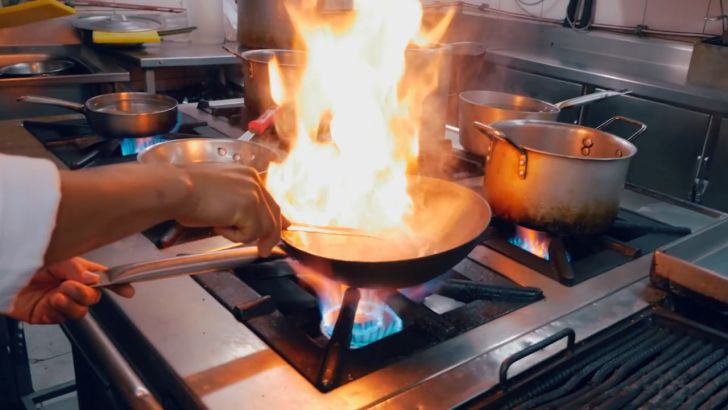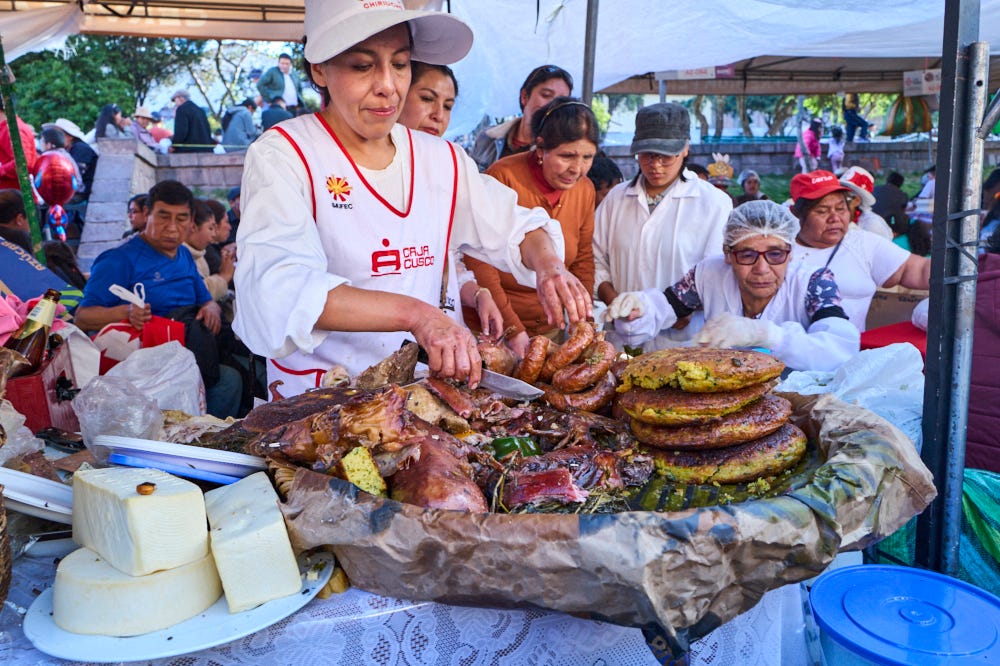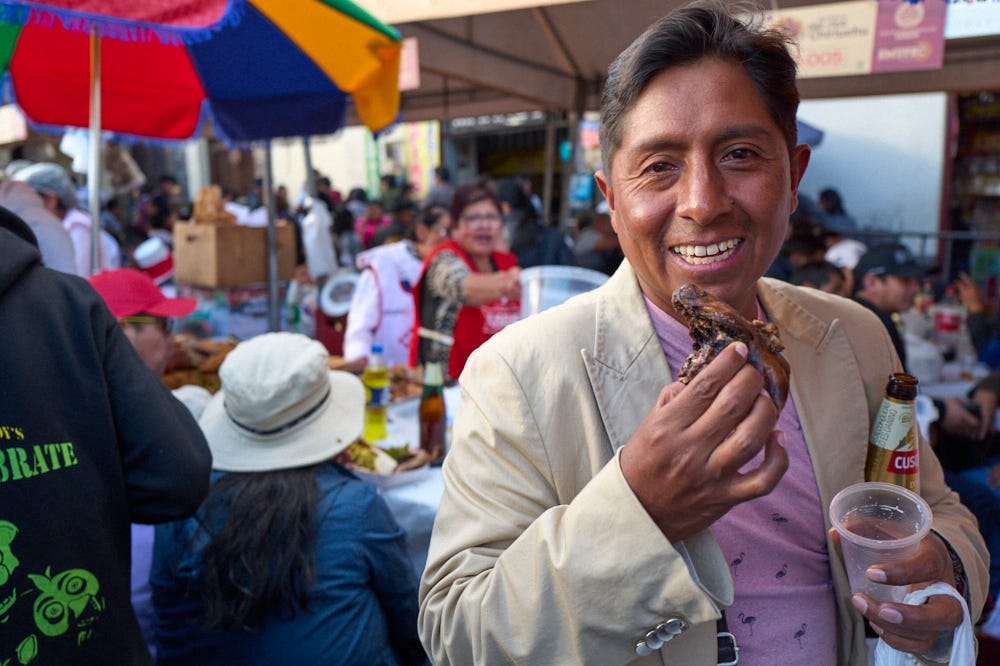Chiriuchu, Cusco's Most Festive Dish
One of the highlights of our recent trip to Cusco was being there for Corpus Christi, one of Cusco’s biggest celebrations. As part of the celebration, we also tried Chiriuchu, Cusco’s most festive dish which is generally available only once a year.
What is Chiriuchu?
Chiriuchu is a dish with special significance in Cusco and also one of Peru’s most epic dishes. Its name translates to “cold chili,” but there are a number of other components in addition to slices of rocoto pepper. In a single dish, you can find these delicacies:
Cuy (guinea pig)
Chorizo
Gallina (hen)
Cecina or Charqui (salted and dried meat)
Cochayuyo (seaweed)
Canchita (toasted corn)
Torreja (corn cake with corn flour, potatoes, squash, green onions, and spices)
Huevera de pescado (fish roe sacs)
Queso Andino (Andean cheese)
Cancha (toasted corn)
Rocoto pepper
At first glance, Chiriuchu may look like a pile of meat. However, the ingredients are arranged according to a careful pattern to symbolize abundance and order in the universe.
NOTE: The description for chiriuchu were taken from my guidebook which you can buy here:
The book is your ultimate guide to Peruvian food—chiriuchu is just one of 200 dishes that I describe in detail. The book also includes restaurant recommendations and practical tips on how to make the most of your time in Peru.
Chiriuchu, the Incan Empire on a Plate
Chiriuchu originated in Cusco when it was considered by the Incans to be the center of the universe. The dish celebrates the reach of the Incan empire by bringing together ingredients from all over Peru—fish eggs and seaweed from the coast, guinea pig and cheese from the Andes, and cecina from the Amazon.
The existence of this dish is a testament to the span of the Incan empire at its peak. The ingenuity of the Incan transportation network allowed the transport of ingredients from the far reaches of the empire to be united in one festive dish.
Our Experience at Corpus Christi
I forgot to check the festivity calendar so it was a lucky coincidence that we arrived in the morning, just before one of Cusco’s biggest celebrations began. The Corpus Christ celebration takes place in Cusco in two parts. There’s a procession where fifteen saints through Plaza Mayor, the main square in Cusco. The other part of the celebration is eating Chiriuchu. This festive dish is served throughout the city on Corpus Christi and the week leading up to it, but as I would see, the bulk of the celebratory eating takes place in Plaza San Francisco.
There were already people gathered in the morning when we arrived at around 9:30 am, but this crowd was nothing compared to the crowd that would form leading up to the procession at 1 pm.
The crowd around the Saints was friendly. I quickly realized that it would be futile to try to take photos of the saints. Instead, I made use of the tight quarters to take portraits of the people around me.


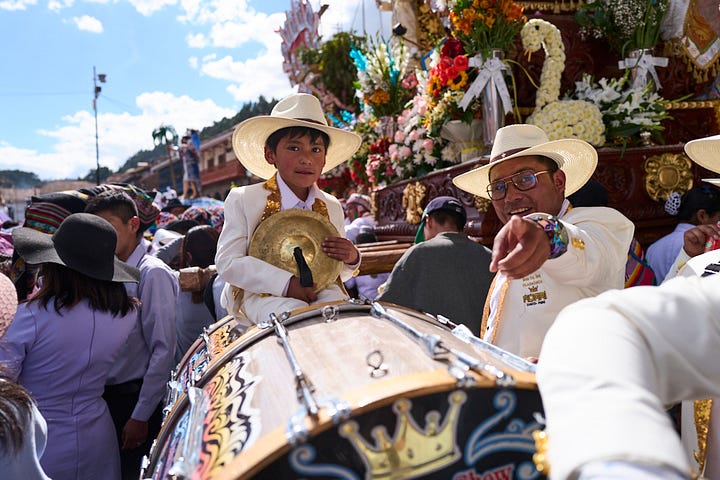
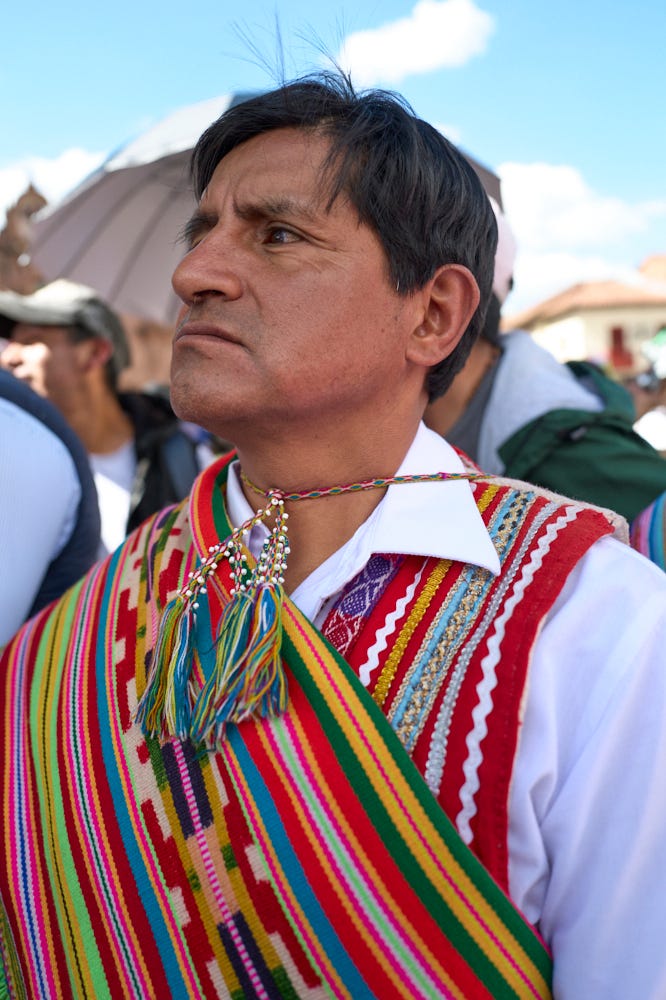
After a couple of hours in Plaza Mayor in the midday sun, I met up with my family and convinced them to check out Plaza San Francisco. With all of the traffic surrounding the plazas, walking looked faster than trying to catch a taxi.
We quickly learned that Google Maps’s shortest path directions do not take into account foot traffic. We ended up stuck in a jam of two crowds going in opposite directions along Portal de Panes flanking the main square. Luckily, tensions did not boil over and with some patience, we were able to free ourselves from the crowd and continue on our way.
Finally, Chiriuchu Time
The scene at Plaza San Francisco was not quite like anything I’d seen before. Ferías or street fairs are quite common in Peru, but this was on another level. There were more than fifty vendors selling variations of chiriuchu and hundreds of people partaking. Everyone was selling either chiriuchu or a beverage to accompany it (beer or emoliente).
People were enjoying Chiriuchu in many different ways. Near the entryway, there were big, long tables arranged like in a Biergarten for large groups. Indeed, chiriuchu was often accompanied by large glasses of Cusqueña. Further inside, many couples and families shared portions of Chiriuchu on benches, small tables, … wherever they could find room. I even saw a family eat chiriuchu out of a plastic bag as they walked around and admired the spectacle of it being served at other stands.
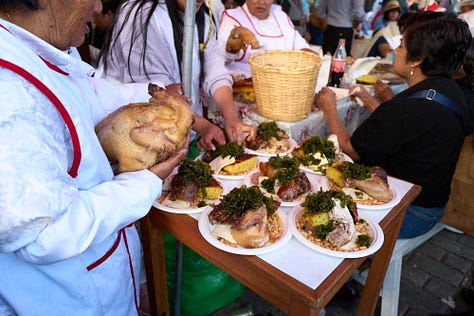
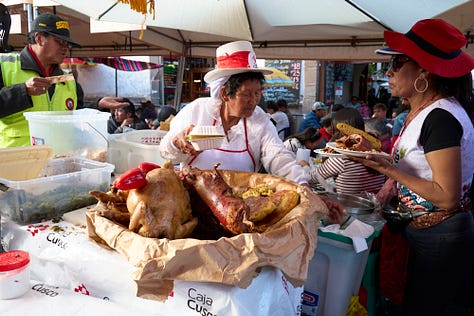
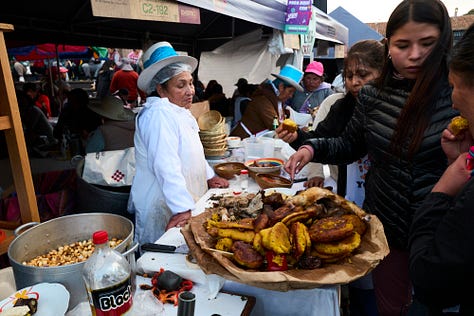



I had to wonder how one chooses where to have Chiriuchu from all of the similar options. I asked, Kevin, a native Cusqueñean, who was waiting for a friend while carrying around a cuy head, presumably a souvenir from his meal. He told me that he had Chiriuchu twice, once at 11 am and another time at 1 pm, and that he was probably done eating for the day. He said that in his opinion the best Chiriuchu were the ones that had good Torrejas and generous portions.
He offered me a pour of his beer and parted ways.
Chiriuchu looks deceptively simple, but it takes more than eight hours to prepare. A lot of the prep work starts the day before the festival. The cuy has to be baked in the oven, the gallina boiled whole, and the torreja is made from scratch. Even though the day was waning by the time I arrived at the plaza, I saw vendors constantly replenishing their offerings by chopping the hens, arranging the seaweed and other components, and calling for new customers.
After walking around and taking photos of all of the Chiriuchu, I was finally starting to get hungry. I ordered a Chiriuchu to go, met up with Mariela, and shared the Chiriuchu on a curb.
So, what does Chiriuchu taste like?
The chiricuhu was a little on the greasy side but not too salty. Traditionally, you’re supposed to eat one component at a time and not mix flavors. We alternated between tasting different ingredients.
Chiriuchu is an offering to the sun and is served cold, presumably because the sun is already hot enough. I’m not a huge fan of cold meat, but I liked how you taste the essential flavor of each ingredient. I especially liked the chorizo and torreja (Kevin was right to prioritize the torreja in choosing a good chiriuchu). Also, for the record, I prefer other preparations of guinea pig.
How to Try Chiriuchu
The best time to try Chiriuchu is during Corpus Christi at San Francisco Plaza. You can’t beat the experience of eating a dish alongside hundreds of locals.
The date for Corpus Christi varies from year to year, but it’s four weeks after Easter week. You can also find it the week leading up to Corpus Christi. We also saw it being served in street stands the days following Corpus Christi.
If you can’t make it to Cusco for Corpus Christi, you can find Chiriuchu year-round at La Cusqueñita (Centenario 800, Cusco). It’s a tourist restaurant (comes with a dance show), but the food is solid.


